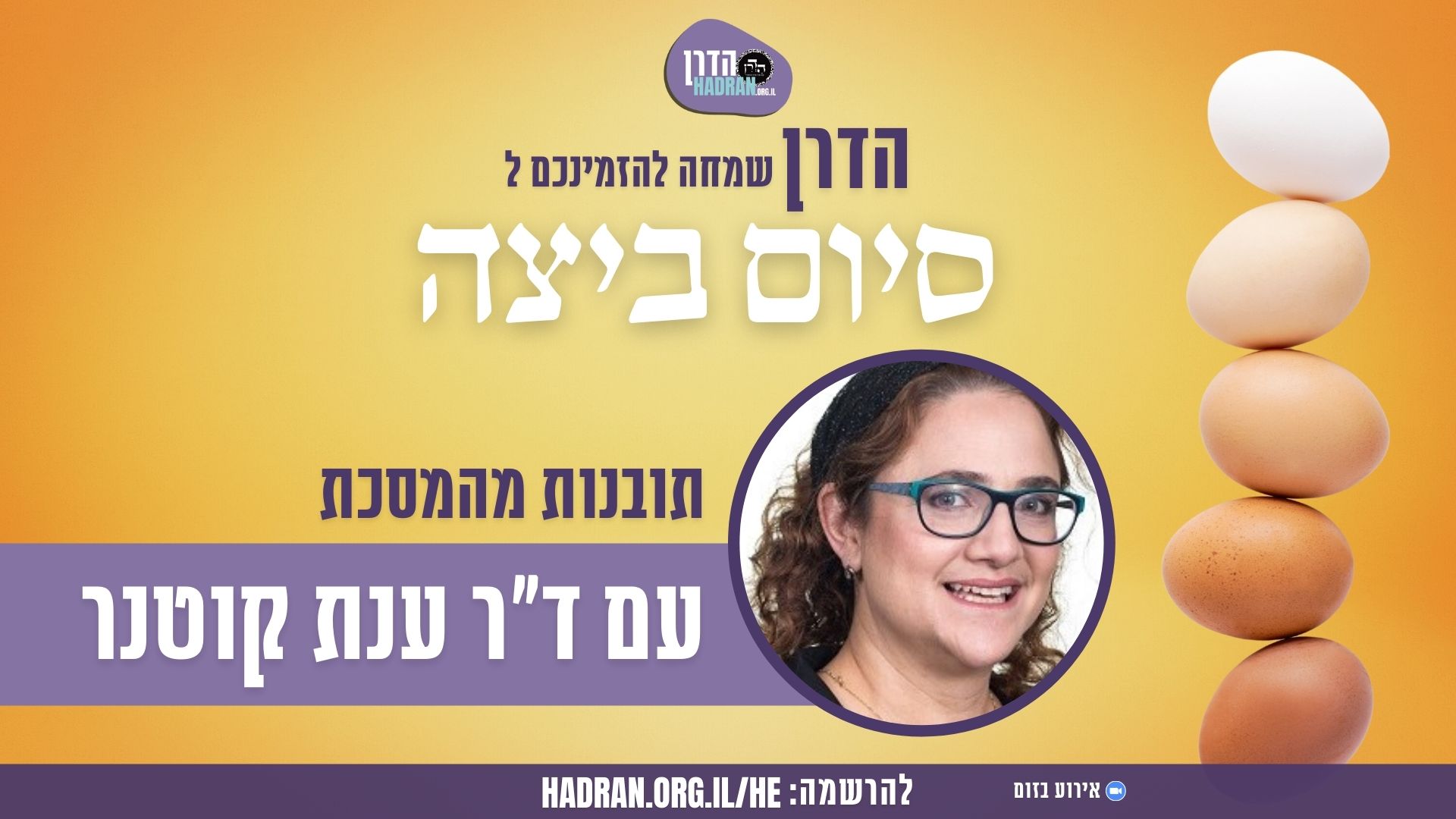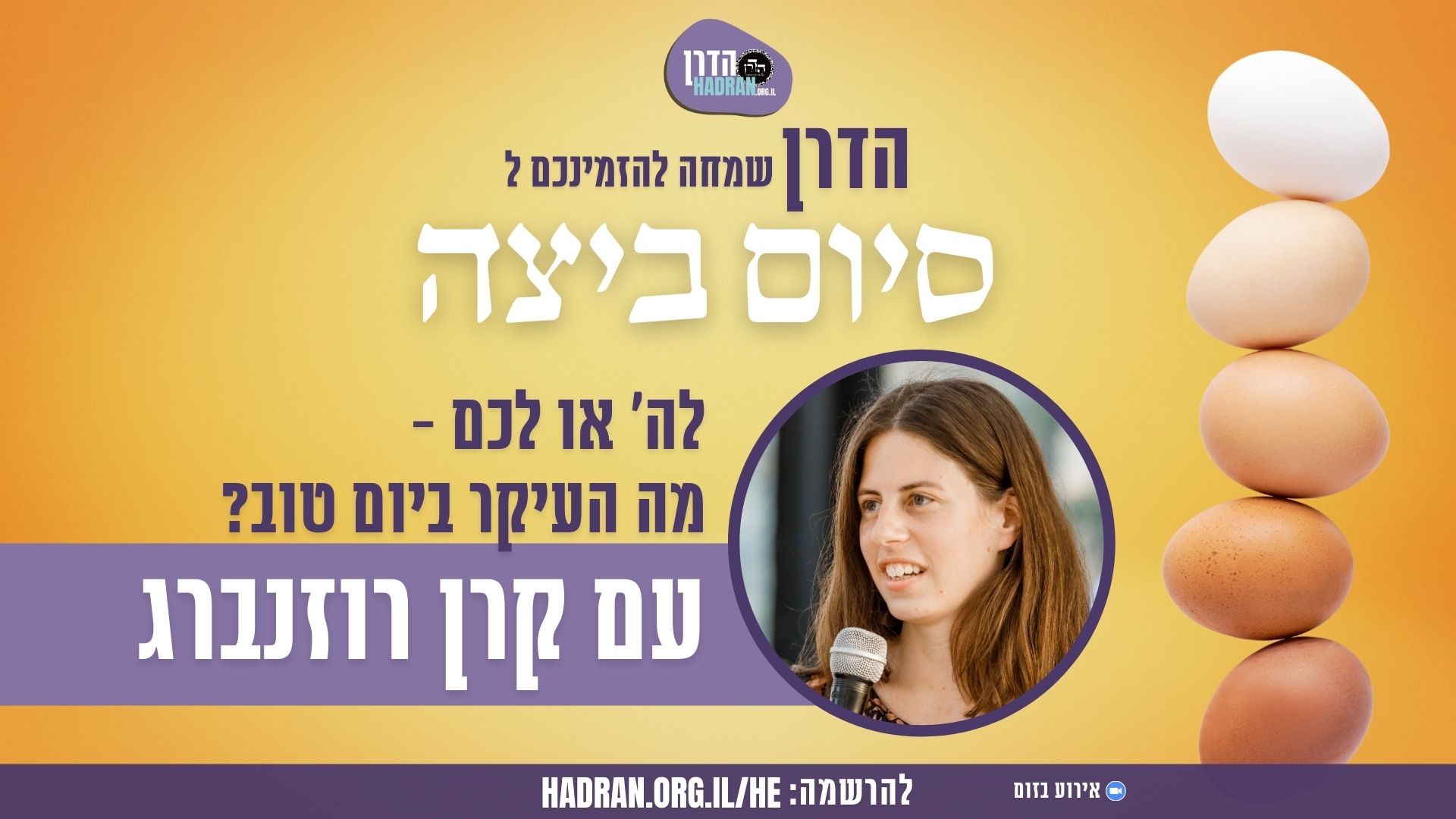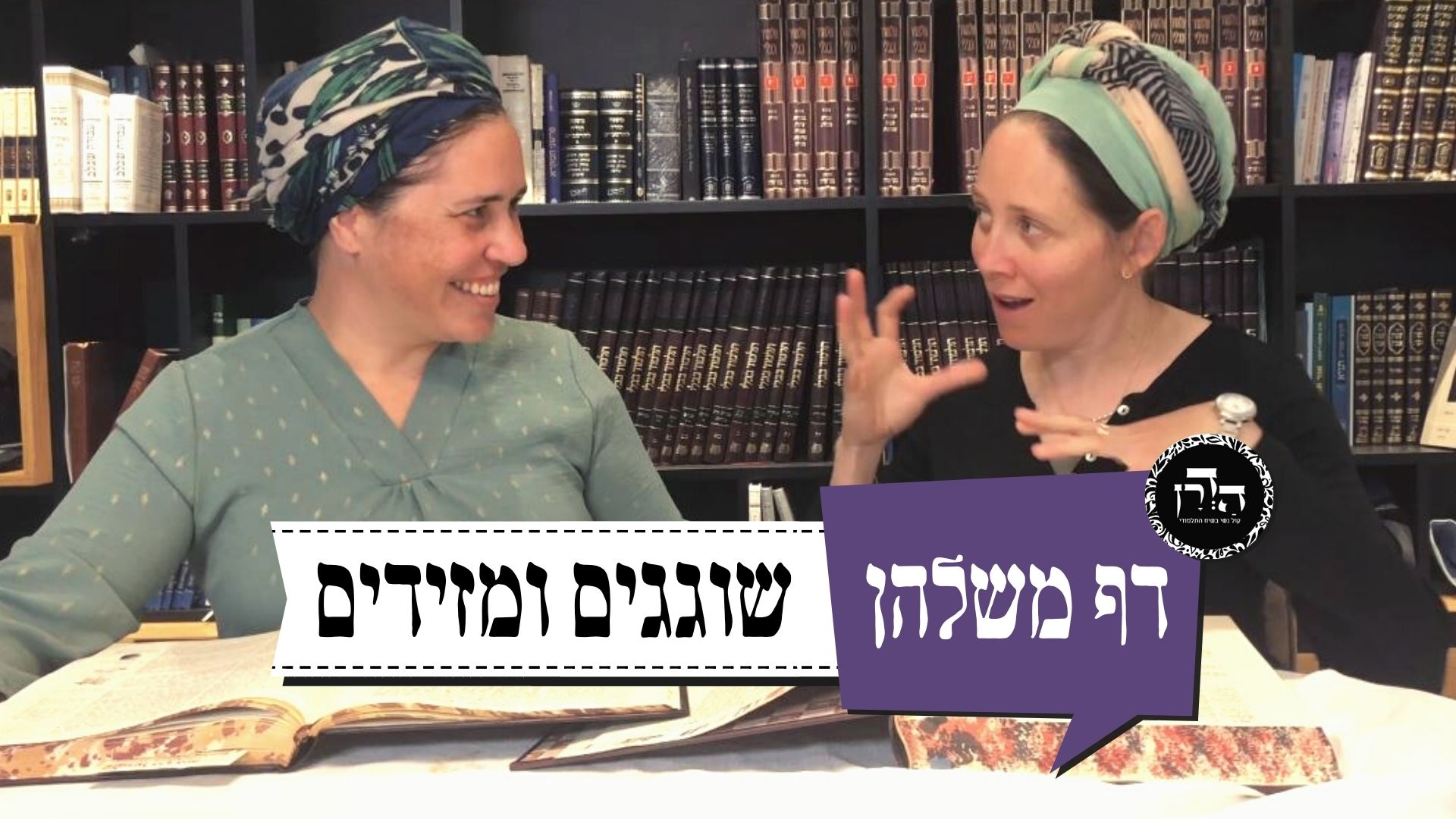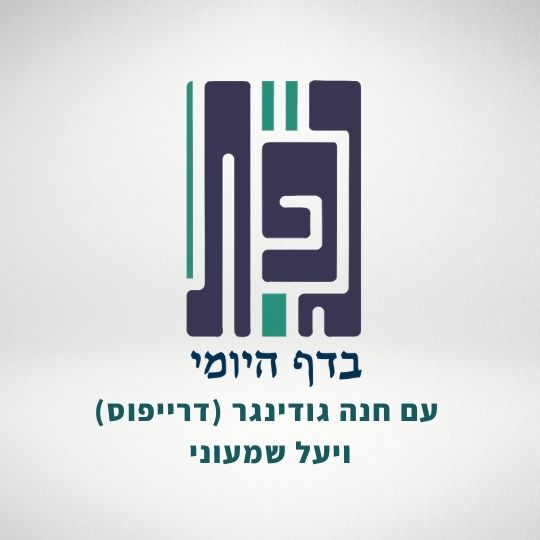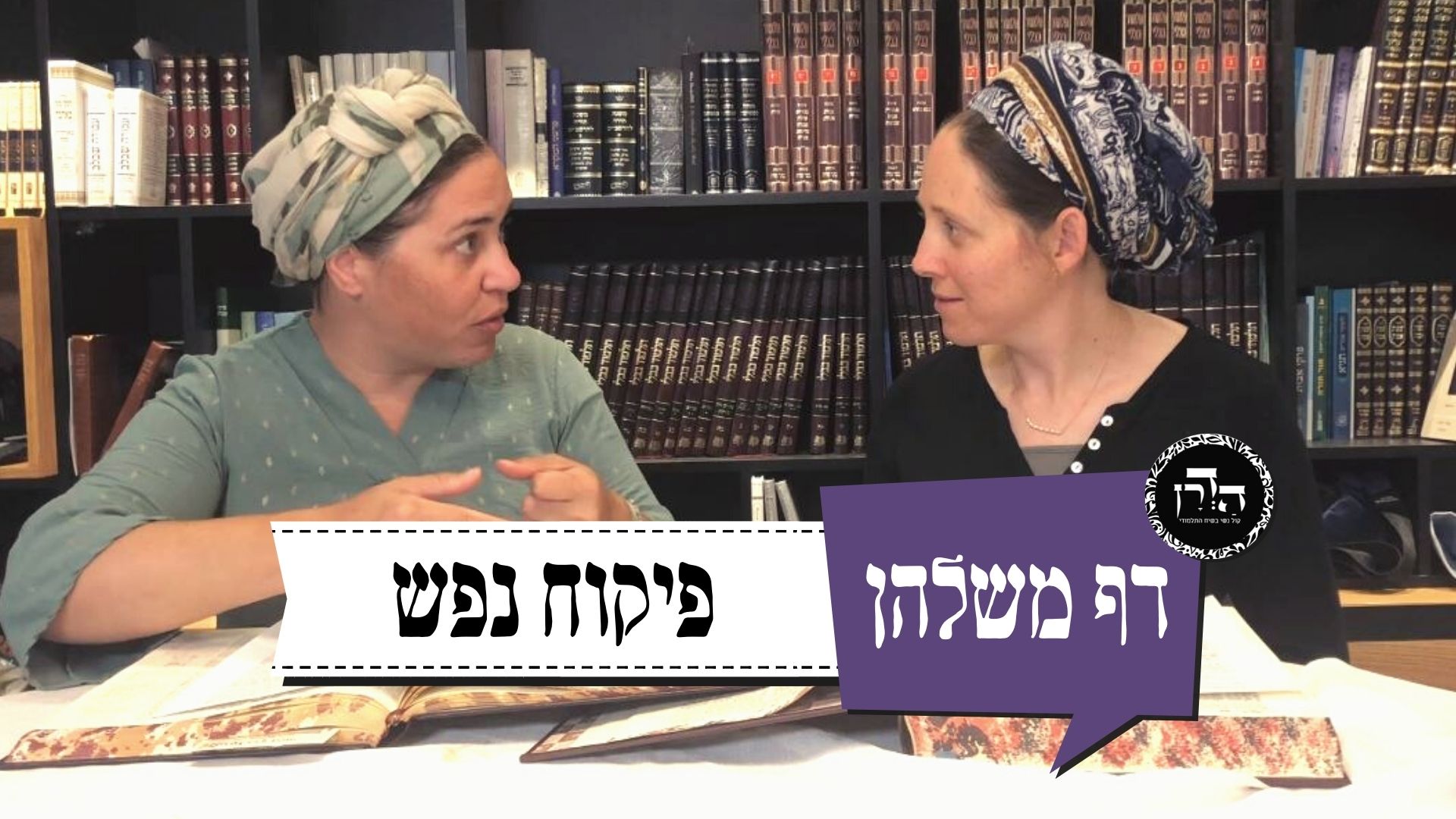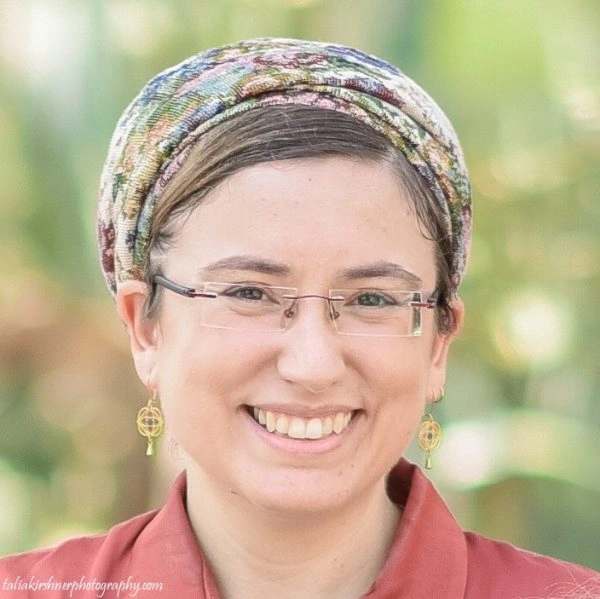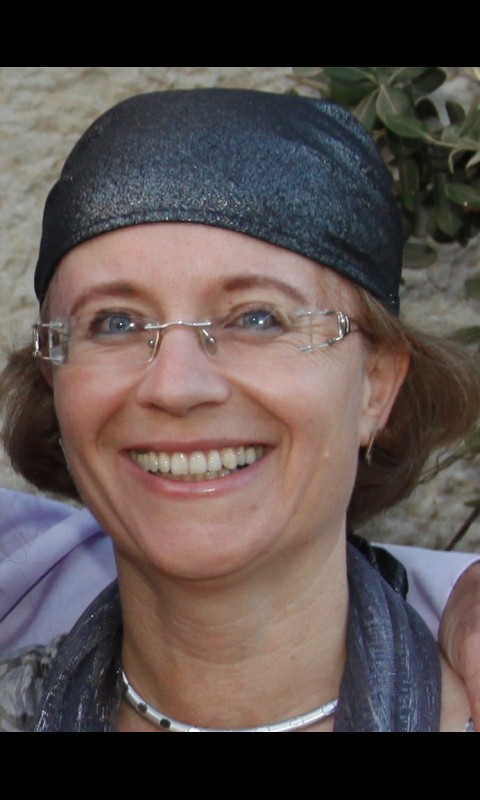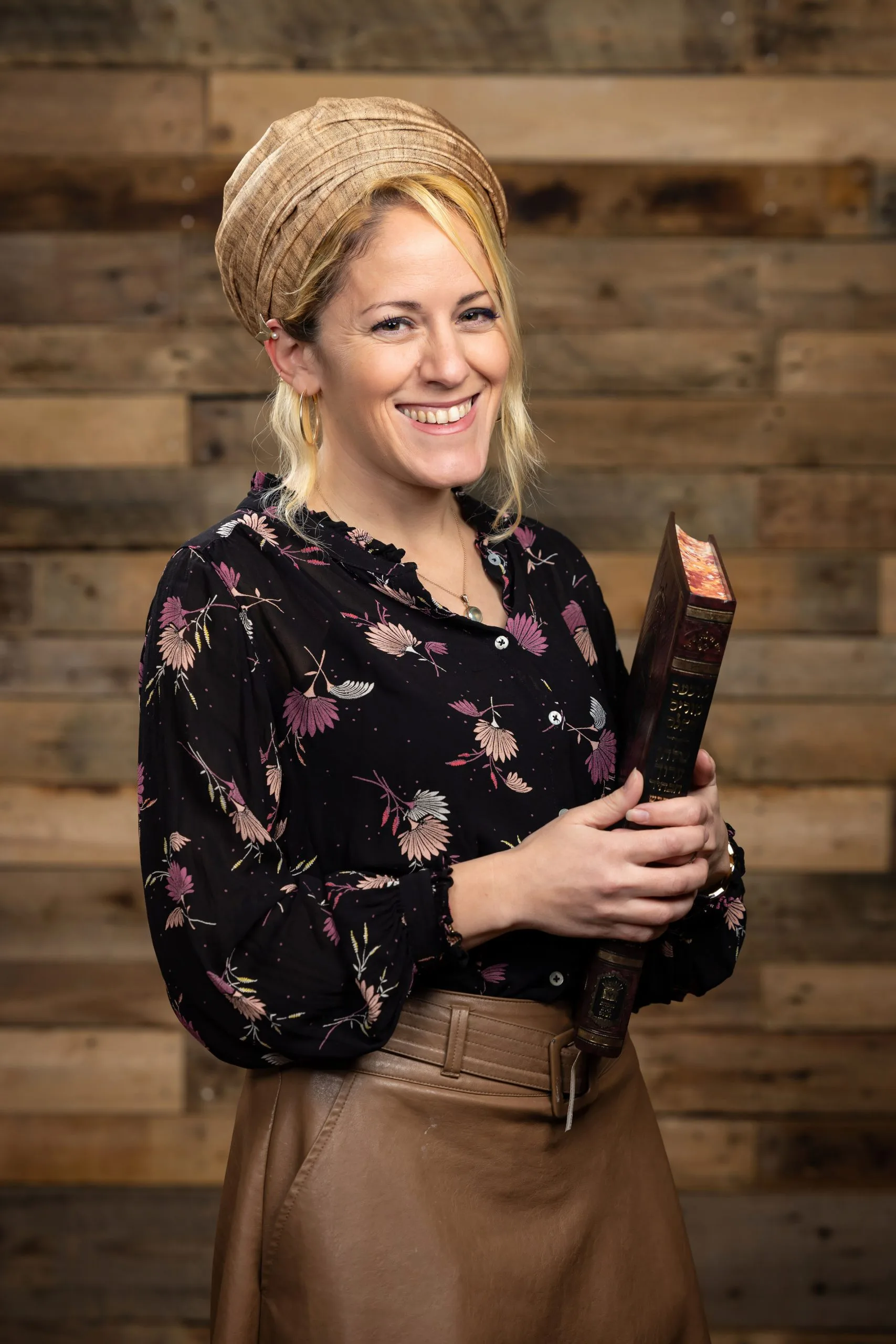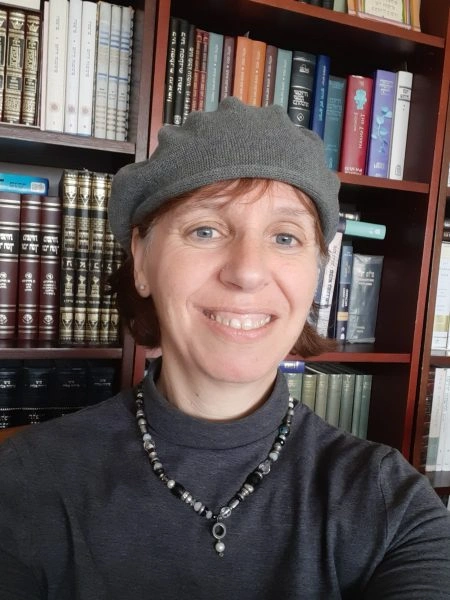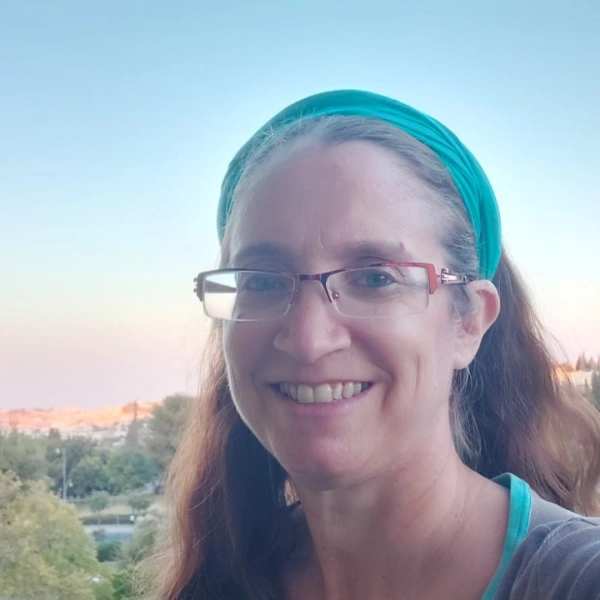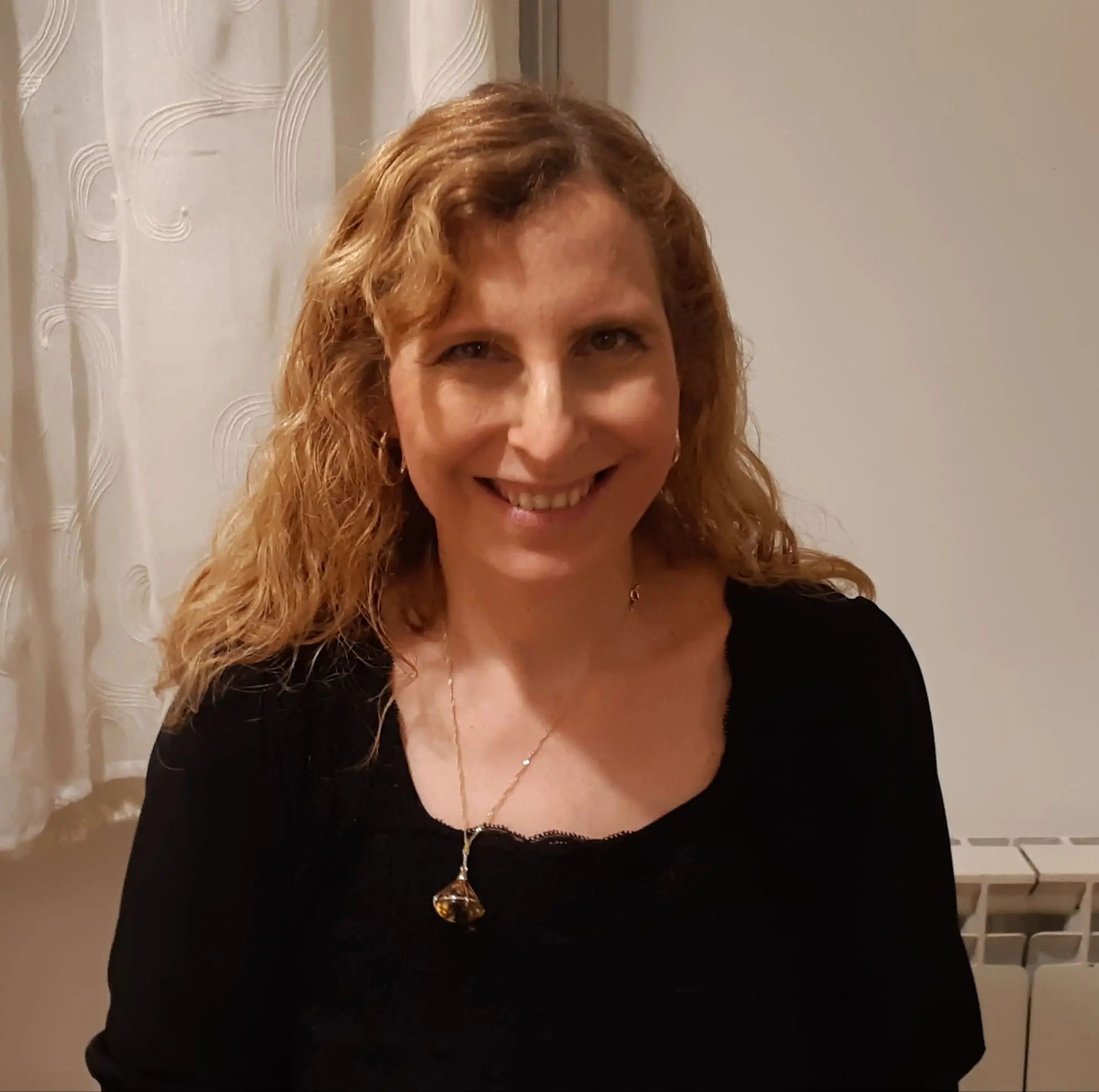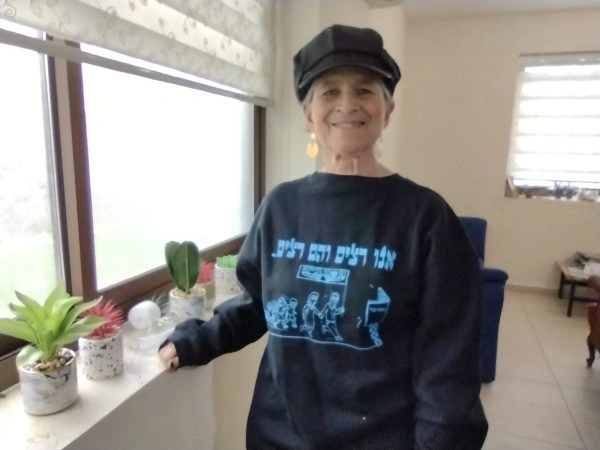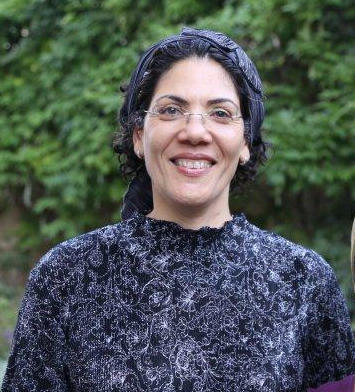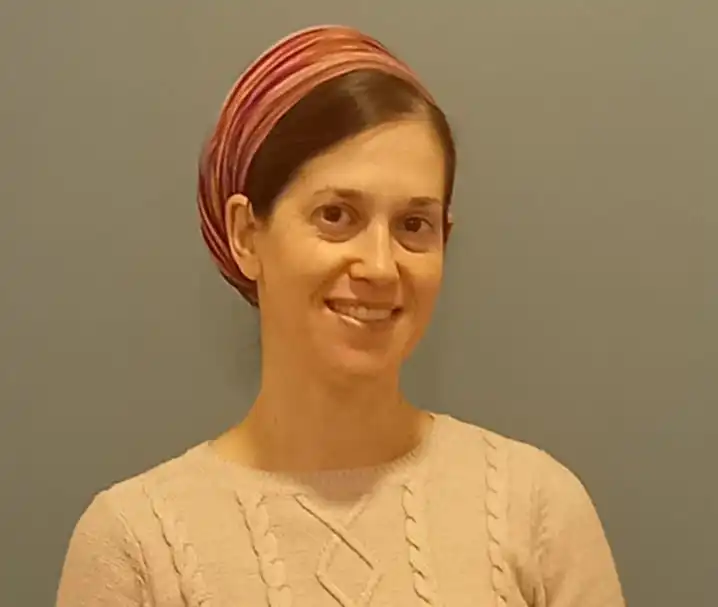ביצה כז
גָּמַר בִּשּׁוּלַיְיהוּ — חֲזוּ לְהוּ.
And then when their cooking is finished, they once again become fit for eating. This demonstrates that even food that had temporarily been set aside because it had become inedible does not remain prohibited for the entire day.
אֲמַר לֵיהּ אַבָּיֵי: וּלְטַעְמָיךְ, תִּקְשֵׁי לָךְ קְדֵרוֹת דְּעָלְמָא, דְּהָא סְתָם קְדֵרוֹת דְּעָלְמָא בֵּין הַשְּׁמָשׁוֹת רוֹתְחוֹת הֵן, וּלְאוּרְתָּא אָכְלִינַן מִינַּיְיהוּ!
Abaye said to him: And according to your reasoning that foods are temporarily considered muktze while being cooked, cooked dishes in general present a difficulty for you on Shabbat as well. As ordinary cooked dishes in general are still bubbling at twilight and not yet edible, and yet we partake of them later in the evening. This demonstrates that although the food was considered muktze at the critical moment of twilight, it is not prohibited for the duration of Shabbat.
אֶלָּא גְּמָרוֹ בִּידֵי אָדָם לָא קָא מִבַּעְיָא לַן. כִּי קָא מִבַּעְיָא לַן גְּמָרוֹ בִּידֵי שָׁמַיִם.
Rather, it must be that we have no dilemma with regard to a food whose completion, which brings it to its finished and edible form, is entirely in the hands of a person, e.g., beans and lentils. Such foods are certainly not considered as muktze for all of Shabbat simply because they had become temporarily unfit for eating. Where we have a dilemma is with regard to an item whose completion is in the hands of Heaven, such as figs and grapes, which dry by the heat of the sun. This dilemma remains unresolved.
רַבִּי יְהוּדָה נְשִׂיאָה הֲוָה לֵיהּ הָהוּא בּוּכְרָא. שַׁדְּרֵיהּ לְקַמֵּיהּ דְּרַבִּי אַמֵּי, סְבַר דְּלָא לְמֶחְזְיֵיהּ. אֲמַר לֵיהּ רַבִּי זְרִיקָא וְאִיתֵּימָא רַבִּי יִרְמְיָה: רַבִּי יְהוּדָה וְרַבִּי שִׁמְעוֹן — הֲלָכָה כְּרַבִּי יְהוּדָה. הֲדַר שַׁדְּרֵיהּ לְקַמֵּיהּ דְּרַבִּי יִצְחָק נַפָּחָא, סְבַר דְּלָא לְמֶחְזְיֵיהּ. אֲמַר לֵיהּ רַבִּי יִרְמְיָה וְאִיתֵּימָא רַבִּי זְרִיקָא: רַבִּי יְהוּדָה וְרַבִּי שִׁמְעוֹן — הֲלָכָה כְּרַבִּי יְהוּדָה.
§ The Gemara returns to the issue of permitting firstborn animals. Rabbi Yehuda Nesia had a firstborn animal that acquired a blemish on a Festival, and he wished to serve it to priests staying at his house. He sent it to be presented before Rabbi Ami for examination, and Rabbi Ami thought that he should not examine it, in accordance with the opinion of Rabbi Shimon. Rabbi Zerika said to him, and some say it was Rabbi Yirmeya: The principle is that in cases of dispute between Rabbi Yehuda and Rabbi Shimon, the halakha is in accordance with the opinion of Rabbi Yehuda, who in this case permits examination of the firstborn. Rabbi Yehuda Nesia then sent the firstborn to be presented before Rabbi Yitzḥak Nappaḥa, who likewise thought that he should not examine it. Rabbi Yirmeya said to him, and some say it was Rabbi Zerika: The principle is that in cases where Rabbi Yehuda and Rabbi Shimon disagree, the halakha is in accordance with the opinion of Rabbi Yehuda.
אֲמַר לֵיהּ רַבִּי אַבָּא: מַאי טַעְמָא לָא שְׁבַקְתִּינְהוּ לְרַבָּנַן לְמֶעְבַּד עוֹבָדָא כְּרַבִּי שִׁמְעוֹן? אֲמַר לֵיהּ: וְאַתְּ מָה בִּידָךְ? אֲמַר לֵיהּ, הָכִי אָמַר רַבִּי זֵירָא: הֲלָכָה כְּרַבִּי שִׁמְעוֹן.
Rabbi Abba said to Rabbi Yirmeya: What is the reason that you did not allow the Sages to act in accordance with the opinion of Rabbi Shimon? He said to him: And you, what do you have? Do you have a tradition that the halakha is in accordance with the opinion of Rabbi Shimon? Rabbi Abba said to him that Rabbi Zeira said as follows: The halakha in this case is in accordance with the opinion of Rabbi Shimon.
אֲמַר מַאן דְּהוּא: אֶזְכֵּי וְאֶסַּק לְהָתָם, וְאֶגְמְרַהּ לִשְׁמַעְתָּא מִפּוּמֵּיהּ דְּמָרַהּ. כִּי סָלֵיק לְהָתָם, אַשְׁכְּחֵיהּ לְרַבִּי זֵירָא, אֲמַר לֵיהּ: אֲמַר מָר הֲלָכָה כְּרַבִּי שִׁמְעוֹן? אֲמַר לֵיהּ: לָא, אֲנָא ״מִסְתַּבְּרָא״ אֲמַרִי.
The Gemara relates that a certain unidentified person in Babylonia said: May it be His will that I merit to go up there to Eretz Yisrael, and that I learn this teaching from the mouth of its Master; I will ask Rabbi Zeira himself for his opinion on this matter. When he went up there to Eretz Yisrael, he found Rabbi Zeira and said to him: Did the Master say that the halakha is in accordance with the opinion of Rabbi Shimon? Rabbi Zeira said to him: No, that is not what I said; rather, I said: It stands to reason that this is so. It is reasonable to rule in accordance with Rabbi Shimon on this issue, although I do not have a definitive tradition to this effect.
מִדְּקָתָנֵי בְּמַתְנִיתִין: רַבִּי שִׁמְעוֹן אוֹמֵר כֹּל שֶׁאֵין מוּמוֹ נִיכָּר מִבְּעוֹד יוֹם — אֵין זֶה מִן הַמּוּכָן, וְקָתָנֵי לַהּ בְּבָרַיְיתָא בִּלְשׁוֹן חֲכָמִים — שְׁמַע מִינַּהּ מִסְתַּבְּרָא כְּווֹתֵיהּ.
Rabbi Zeira explains: Why do I think so? From the fact that it teaches in the mishna that Rabbi Shimon says: Any firstborn animal whose blemish is not perceptible while it is still day is not considered to be among the animals prepared prior to the Festival for use on the Festival. And a baraita taught the same ruling in the name of the Sages, indicating that this is the majority opinion. One should therefore learn from this that it stands to reason that the halakha is ruled in accordance with the opinion of Rabbi Shimon.
מַאי הָוֵי עֲלַהּ? אָמַר רַב יוֹסֵף: תָּא שְׁמַע, דְּתַלְיָא בְּאַשְׁלֵי רַבְרְבֵי. דְּאָמַר רַבִּי שִׁמְעוֹן בֶּן פַּזִּי אָמַר רַבִּי יְהוֹשֻׁעַ בֶּן לֵוִי אָמַר רַבִּי יוֹסֵי בֶּן שָׁאוּל אָמַר רַבִּי מִשּׁוּם קְהָלָא קַדִּישָׁא דְּבִירוּשָׁלַיִם: רַבִּי שִׁמְעוֹן וַחֲבֵרָיו אָמְרוּ הֲלָכָה כְּרַבִּי מֵאִיר.
The Gemara asks: In the final analysis, what conclusion was reached about this matter? Whose opinion does the halakha follow? Rav Yosef said: Come and hear, as this matter hangs on great trees, meaning it is the subject of a dispute among the early Sages. As Rabbi Shimon ben Pazi said that Rabbi Yehoshua ben Levi said that Rabbi Yosei ben Shaul said that Rabbi Yehuda HaNasi said in the name of the holy community in Jerusalem: Rabbi Shimon ben Menasya and his colleagues said that the halakha is in accordance with the opinion of Rabbi Meir.
אָמְרוּ? וְהָא אִינְהוּ קַשִּׁישֵׁי מִנֵּיהּ טוּבָא! אֶלָּא: בְּשִׁיטַת רַבִּי מֵאִיר אֲמָרוּהָ.
The Gemara wonders at the wording of this report: How could the holy community in Jerusalem have reported that Rabbi Shimon ben Menasya and his colleagues said that the halakha is in accordance with the opinion of Rabbi Meir? Aren’t they much older than he? Why, then, would they have reported a halakha in his name? The Gemara answers: Rather, the holy community in Jerusalem said the following: Rabbi Shimon ben Menasya and his colleagues, who said that one may not examine blemishes on a Festival, spoke in accordance with the opinion of Rabbi Meir.
דִּתְנַן: הַשּׁוֹחֵט אֶת הַבְּכוֹר וְאַחַר כָּךְ הֶרְאָה אֶת מוּמוֹ — רַבִּי יְהוּדָה מַתִּיר. וְרַבִּי מֵאִיר אוֹמֵר: הוֹאִיל וְנִשְׁחַט שֶׁלֹּא עַל פִּי מוּמְחֶה — אָסוּר. אַלְמָא קָסָבַר רַבִּי מֵאִיר: רְאִיַּית בְּכוֹר לָאו כִּרְאִיַּית טְרֵפָה, רְאִיַּית בְּכוֹר — מֵחַיִּים, רְאִיַּית טְרֵפָה — לְאַחַר שְׁחִיטָה.
To which teaching of Rabbi Meir is the Gemara referring? It is as we learned in a mishna (Bekhorot 28a): If one slaughtered a firstborn before it was shown to a Sage and deemed permitted, and afterward he showed its blemish to a Sage, who confirmed that it was indeed a permanent blemish that permitted the animal to be slaughtered, Rabbi Yehuda permits it, as it had been established that the animal was blemished. And Rabbi Meir says: Since it was slaughtered without the permission of an expert, it is prohibited. Apparently Rabbi Meir holds that the examination of a firstborn is not as simple a process as the examination of a tereifa, since it involves more than a mere examination of the body of the animal. The examination of a firstborn must be conducted when the animal is alive, whereas the examination of a tereifa may be performed even after slaughtering.
וּמִינַּהּ: רְאִיַּית טְרֵפָה — אֲפִילּוּ בְּיוֹם טוֹב, רְאִיַּית בְּכוֹר — מֵעֶרֶב יוֹם טוֹב.
And from this Rabbi Shimon ben Menasya and his colleagues inferred that the examination of a tereifa, which consists merely of clarifying the facts of the animal’s physical state, may be done even on a Festival. On the other hand, the more stringent examination of a firstborn, which can be likened to the rendering of a judgment, a process with principles of its own, must be performed on the eve of the Festival.
אֲמַר לֵיהּ אַבָּיֵי: אַטּוּ הָתָם, בְּרוֹאִין מוּמִין פְּלִיגִי? בִּקְנָסָא פְּלִיגִי. דְּאָמַר רַבָּה בַּר בַּר חָנָה אָמַר רַבִּי יוֹחָנָן: בְּדוּקִּין שֶׁבָּעַיִן — כּוּלֵּי עָלְמָא לָא פְּלִיגִי דְּאָסוּר, מִשּׁוּם דְּמִשְׁתַּנִּין.
Abaye said to Rav Yosef: Is that to say that there, in that mishna, Rabbi Yehuda and Rabbi Meir disagree about whether or not one may examine blemishes on a Festival? That was not their dispute; rather, they disagree with regard to the question of whether or not there is a penalty for one who acted improperly. As Rabba bar bar Ḥana said that Rabbi Yoḥanan said: If the blemish was in the eyelids, e.g., if a fissure developed there that disqualifies the animal, everyone, including Rabbi Meir, agrees that the animal is prohibited, because such a blemish changes its appearance after the slaughter. It is possible that after slaughter what was a temporary blemish will then look like a permanent one, and the animal will incorrectly be permitted retroactively.
כִּי פְּלִיגִי בְּמוּמִין שֶׁבַּגּוּף, רַבִּי מֵאִיר סָבַר: גָּזְרִינַן מוּמִין שֶׁבַּגּוּף אַטּוּ מוּמִין שֶׁבָּעַיִן. וְרַבִּי יְהוּדָה סָבַר: לָא גָּזְרִינַן.
When they disagree is in a case of blemishes in the body, e.g., if an ear had been cut off or a foreleg broken, which are prominent blemishes whose appearance does not change after death. Rabbi Meir holds that we issue a decree that blemishes in the body are prohibited due to blemishes in the eye, and Rabbi Yehuda holds that we do not issue such a decree.
אָמַר רַב נַחְמָן בַּר יִצְחָק: מַתְנִיתִין נָמֵי דַּיְקָא, דְּקָתָנֵי: רַבִּי מֵאִיר אוֹמֵר: הוֹאִיל וְנִשְׁחַט שֶׁלֹּא עַל פִּי מוּמְחֶה — אָסוּר. שְׁמַע מִינַּהּ: קְנָסָא הוּא דְּקָא קָנֵיס, שְׁמַע מִינַּהּ.
Rav Naḥman bar Yitzḥak said: The wording of the mishna in tractate Bekhorot is also precise according to this explanation, as it teaches that Rabbi Meir says: Since it was slaughtered without the permission of an expert who confirmed that this is a permanent blemish, it is prohibited. Learn from this that this is a penalty that Rabbi Meir imposes and nothing else. The Gemara concludes: Indeed, learn from this that this is the correct understanding of the mishna.
אַמֵּי וַרְדִּינָאָה חָזֵי בּוּכְרָא דְּבֵי נְשִׂיאָה הֲוָה. בְּיוֹמָא טָבָא לָא הֲוָה חָזֵי. אֲתוֹ וַאֲמַרוּ לֵיהּ לְרַבִּי אַמֵּי, אֲמַר לְהוּ: שַׁפִּיר קָא עָבֵיד דְּלָא חָזֵי. אִינִי? וְהָא רַבִּי אַמֵּי גּוּפֵיהּ חָזֵי! רַבִּי אַמֵּי כִּי חָזֵי — מֵאֶתְמוֹל הֲוָה חָזֵי,
§ The Gemara relates that Ami of Vardina was the examiner of firstborns in the household of the Nasi. On Festivals he would not examine firstborn blemishes. They came and told Rabbi Ami about this. He said to them: He does well not to examine them. The Gemara raises an objection: Is that so? But didn’t Rabbi Ami himself examine firstborns for blemishes on a Festival? The Gemara answers: When Rabbi Ami would examine the blemishes of firstborns, it was on the day before the Festival that he would examine them, to see whether the blemishes were permanent or temporary.
וּבְיוֹם טוֹב שַׁיּוֹלֵי קָא מְשַׁיֵּיל הֵיכִי הֲוָה עוֹבָדָא. כִּי הָא דְּהָהוּא גַּבְרָא דְּאַיְיתִי בּוּכְרָא לְקַמֵּיהּ דְּרָבָא אַפַּנְיָא דְּמַעֲלֵי יוֹמָא טָבָא. הֲוָה יָתֵיב רָבָא וְקָא חָיֵיף רֵישֵׁיהּ. דַּלִּי עֵינֵיהּ וְחַזְיֵיהּ לְמוּמֵיהּ. אֲמַר לֵיהּ: זִיל הָאִידָּנָא וְתָא לִמְחַר.
And on the Festival itself he would ask only how the incident occurred, meaning that he would investigate the cause of the blemish, as in that case where a certain man who was a priest brought a firstborn before Rava, close to nightfall on a Festival eve. Rava was sitting and washing the hair on his head. He raised his eyes and saw the firstborn’s blemish. He then said to the owner of the firstborn: Go now, and come back tomorrow.
כִּי אֲתָא לִמְחַר, אֲמַר: הֵיכִי הֲוָה עוֹבָדָא? אֲמַר לֵיהּ: הֲוָה שַׁדְיָין שְׂעָרֵי בְּהָךְ גִּיסָא דְּהוּצָא, וַהֲוָה אִיהוּ בְּאִידַּךְ גִּיסָא. בַּהֲדֵי דְּבָעֵי לְמֵיכַל, עַיֵּיל רֵישֵׁיהּ וּפַרְטֵיהּ הוּצָא לְשִׂפְוָתֵיהּ. אֲמַר לֵיהּ: דִּלְמָא אַתְּ גְּרַמְתְּ לֵיהּ? אֲמַר לֵיהּ: לָא.
When he came back on the following day, Rava said to him: How did the incident that caused the blemish occur? The owner said to Rava: Barley grains were scattered on one side of a fence of thorns, while the firstborn was standing on the other side. When it wanted to eat, it stuck its head through the fence and a thorn cut its lip. Rava said to the owner: Perhaps you caused the blemish by deliberately placing the barley on the other side of the fence? He said to him: No.
וּמְנָא תֵּימְרָא דִּגְרָמָא אָסוּר, דְּתַנְיָא: ״מוּם לֹא יִהְיֶה בּוֹ״, אֵין לִי אֶלָּא שֶׁלֹּא יִהְיֶה בּוֹ מוּם, מִנַּיִין שֶׁלֹּא יִגְרוֹם לוֹ עַל יְדֵי דָּבָר אַחֵר, שֶׁלֹּא יָבִיא בָּצֵק אוֹ דְבֵלָה וְיַנִּיחַ לוֹ עַל גַּבֵּי הָאֹזֶן כְּדֵי שֶׁיָּבֹא הַכֶּלֶב וְיִטְּלֶנּוּ — תַּלְמוּד לוֹמַר: ״כׇּל מוּם״. אָמַר ״מוּם״, וְאָמַר ״כׇּל מוּם״.
The Gemara comments: And from where do you say that causing a blemish to an offering is prohibited? As it is taught in a baraita: It is written with regard to offerings: “There must not be any blemish in it” (Leviticus 22:21). I have only an explicit prohibition that it may not have a blemish; from where is it derived that one may not cause a blemish to it by means of something else, e.g., that he does not bring dough or a dried fig and place it on its ear so that a dog will come and take it, thereby biting off part of the animal’s ear and leaving it blemished? Therefore the verse states “any blemish.” It says “blemish” and it says “any blemish”; the word “any” comes to teach that one may not cause a blemish.
מַתְנִי׳ בְּהֵמָה שֶׁמֵּתָה — לֹא יְזִיזֶנָּה מִמְּקוֹמָהּ. וּמַעֲשֶׂה וְשָׁאֲלוּ אֶת רַבִּי טַרְפוֹן עָלֶיהָ וְעַל הַחַלָּה שֶׁנִּטְמֵאת, וְנִכְנַס לְבֵית הַמִּדְרָשׁ וְשָׁאַל, וְאָמְרוּ לוֹ: לֹא יְזִיזֵם מִמְקוֹמָם.
MISHNA: With regard to an animal that died, one may not move it from its place on a Festival. And such an incident once occurred and they asked Rabbi Tarfon about it. And on that same occasion they also asked him about ḥalla that had been separated from dough and then became ritually impure on a Festival. Such ḥalla is not fit to be eaten by anyone, nor may it be used in any other manner, e.g., as animal feed or as fuel for a fire, on that day. Rabbi Tarfon entered the study hall and inquired about these matters, and the Sages said to him: One may not move them from their place.
גְּמָ׳ לֵימָא תְּנַן סְתָמָא דְּלָא כְּרַבִּי שִׁמְעוֹן? (דִּתְנַן) רַבִּי שִׁמְעוֹן אוֹמֵר: מְחַתְּכִין אֶת הַדִּלּוּעִין לִפְנֵי הַבְּהֵמָה, וְאֶת הַנְּבֵלָה לִפְנֵי הַכְּלָבִים. רַבִּי יְהוּדָה אוֹמֵר: אִם לֹא הָיְתָה נְבֵלָה מֵעֶרֶב שַׁבָּת — אֲסוּרָה.
GEMARA: The Gemara suggests: Let us say that we learned the unattributed mishna not in accordance with the opinion of Rabbi Shimon. As we learned in a mishna (Shabbat 156b) that Rabbi Shimon says: One may cut up gourds for an animal on Shabbat so that it can eat them more easily, and similarly, one may cut up an unslaughtered animal carcass for dogs. Rabbi Yehuda says: If it was not an animal carcass already on the eve of Shabbat, but rather it died on Shabbat itself, it is prohibited. Since Rabbi Yehuda distinguishes between an animal that died on Shabbat and one that died before Shabbat, it would appear that Rabbi Shimon holds that one may move an animal carcass and feed it to dogs even if it died on Shabbat. Accordingly, the mishna that prohibits moving an animal that died on a Festival seems to conflict with Rabbi Shimon’s opinion.
אֲפִילּוּ תֵּימָא רַבִּי שִׁמְעוֹן, מוֹדֶה רַבִּי שִׁמְעוֹן בְּבַעֲלֵי חַיִּים שֶׁמֵּתוּ, שֶׁאֲסוּרִין.
The Gemara rejects this argument: The mishna can be understood even if you say that it is in accordance with the opinion of Rabbi Shimon, as Rabbi Shimon nevertheless concedes in the case of animals that were entirely healthy at twilight but died on the Festival that they are prohibited. Since they were healthy at twilight, the owner had no intention at that point in time of feeding them to dogs, and they are therefore prohibited as muktze. The baraita, on the other hand, is referring to an animal that had been sick on the previous day; since the owner knew that it was close to death, he had in mind to feed it to his dogs after it died.
הָנִיחָא לְמָר בַּר אַמֵּימָר מִשְּׁמֵיהּ דְּרָבָא דְּאָמַר: מוֹדֶה הָיָה רַבִּי שִׁמְעוֹן בְּבַעֲלֵי חַיִּים שֶׁמֵּתוּ שֶׁאֲסוּרִין, שַׁפִּיר. אֶלָּא לְמָר בְּרֵיהּ דְּרַב יוֹסֵף מִשְּׁמֵיהּ דְּרָבָא דְּאָמַר: חָלוּק הָיָה רַבִּי שִׁמְעוֹן אֲפִילּוּ בְּבַעֲלֵי חַיִּים שֶׁמֵּתוּ, שֶׁמּוּתָּרִים — מַאי אִיכָּא לְמֵימַר?
The Gemara asks: This works out well according to the opinion of Mar bar Ameimar in the name of Rava, who said that Rabbi Shimon concedes in the case of animals that died on the Festival without having been mortally sick the day before that they are prohibited on the Festival due to muktze; according to this opinion, it is well. However, according to the opinion of Mar, son of Rav Yosef, in the name of Rava, who said that Rabbi Shimon was in disagreement even in the case of animals that died suddenly, and he holds that they are permitted, what is there to say? The unattributed mishna appears to contradict this opinion.
תַּרְגְּומַהּ זְעֵירִי, בְּבֶהֱמַת קֳדָשִׁים. דַּיְקָא נָמֵי, דְּקָתָנֵי: עָלֶיהָ וְעַל הַחַלָּה שֶׁנִּטְמֵאת. מָה חַלָּה — דְּקַדִּישָׁא, אַף בְּהֵמָה — דְּקַדִּישָׁא.
The Gemara answers: Ze’iri explained it as follows: The mishna is referring to a sacred animal that died; since it is sacred property, one may not derive benefit from it, and therefore one may not give it to dogs. The Gemara comments: The language of the mishna is also precise according to this interpretation, as it teaches: They asked Rabbi Tarfon about it and about ḥalla that became ritually impure, from which it may be inferred: Just as ḥalla is sacred, so too, the animal mentioned here is one that was sacred, rather than a non-sacred animal.
אֶלָּא טַעְמָא דְּקַדִּישָׁא הָא דְּחוּלִּין — שַׁרְיָא. הָנִיחָא לְמָר בְּרֵיהּ דְּרַב יוֹסֵף מִשְּׁמֵיהּ דְּרָבָא, דְּאָמַר: חָלוּק הָיָה רַבִּי שִׁמְעוֹן אַף בְּבַעֲלֵי חַיִּים שֶׁמֵּתוּ שֶׁמּוּתָּרִין — שַׁפִּיר. אֶלָּא לְמָר בַּר אַמֵּימָר מִשְּׁמֵיהּ דְּרָבָא, דְּאָמַר: מוֹדֶה הָיָה רַבִּי שִׁמְעוֹן בְּבַעֲלֵי חַיִּים שֶׁמֵּתוּ שֶׁאֲסוּרִין — מַאי אִיכָּא לְמֵימַר?
The Gemara asks: Rather, according to this explanation, the reason that the animal may not be moved is that the animal was sacred; but if it was a non-sacred animal that died, it would be permitted to move it. If so, this works out well according to the opinion of Mar, son of Rav Yosef, in the name of Rava, who said that Rabbi Shimon was in disagreement even in the case of animals that died, and he holds that they are permitted; according to this opinion, it is well, as one can say that the mishna, which indicates that one may move an animal that died on a Festival, is in accordance with the opinion of Rabbi Shimon. However, according to the opinion of Mar bar Ameimar in the name of Rava, who said that Rabbi Shimon concedes in the case of animals that died that they are prohibited, what is there to say? The mishna is in accordance with neither Rabbi Shimon nor Rabbi Yehuda.
הָכָא בְּמַאי עָסְקִינַן — בִּמְסוּכֶּנֶת, וְדִבְרֵי הַכֹּל.
The Gemara answers: With what are we dealing here? It is with a case where the animal was in danger of dying the day before, and the owner had in mind to feed it to his dogs after it died, and all agree with regard to the ruling. Therefore, according to Rabbi Shimon, an allowance is granted to move the animal if it was a non-sacred animal and it had been in danger prior to the Festival; and if the animal was sacred, even he agrees that it is prohibited, as it may not be fed to dogs.
מַתְנִי׳ אֵין נִמְנִין עַל הַבְּהֵמָה לְכַתְּחִלָּה בְּיוֹם טוֹב. אֲבָל נִמְנִין עָלֶיהָ מֵעֶרֶב יוֹם טוֹב, וְשׁוֹחֲטִין וּמְחַלְּקִין בֵּינֵיהֶם.
MISHNA: One may not register to have a portion of an animal on a Festival ab initio, since it is prohibited to divide up an animal into portions for different people, as this is similar to conducting business, a weekday activity, on a Festival. But one may register for the animal on the eve of the Festival, and then those who registered for the animal may slaughter and divide it between them on the Festival itself in accordance with the agreement reached the day before. The next day, each pays the slaughterer according to his portion of the animal.
גְּמָ׳ מַאי אֵין נִמְנִין? אָמַר רַב יְהוּדָה אָמַר שְׁמוּאֵל: אֵין פּוֹסְקִין דָּמִים לְכַתְּחִלָּה עַל הַבְּהֵמָה בְּיוֹם טוֹב. הֵיכִי עָבֵיד? אָמַר רַב: מֵבִיא שְׁתֵּי בְהֵמוֹת וּמַעֲמִידָן זוֹ אֵצֶל זוֹ, וְאוֹמֵר: זוֹ כָּזוֹ?
GEMARA: The Gemara asks: What is the meaning of: One may not register? Rav Yehuda said that Shmuel said: One may not fix a sum of money and set a particular price for each portion of an animal on a Festival ab initio. The Gemara asks: What should one do on a Festival to divide up the animal without fixing a price? Rav said: He should bring two animals and stand them one next to the other and say: Is this one equal in value to the other one? If the purchasers confirm that this is the case, then after the Festival they assess the value of the animal that is identical to the animal that had been slaughtered on the Festival, and in that way they establish the amount that each person must pay.
תַּנְיָא נָמֵי הָכִי: לֹא יֹאמַר אָדָם לַחֲבֵרוֹ הֲרֵינִי עִמְּךָ בְּסֶלַע, הֲרֵינִי עִמְּךָ בִּשְׁתַּיִם, אֲבָל אוֹמֵר לוֹ: הֲרֵינִי עִמְּךָ לְמֶחֱצָה וְלִשְׁלִישׁ וְלִרְבִיעַ.
This is also taught in a baraita that states: A person may not say to another on a Festival: I am hereby in partnership with you in this animal that you are about to slaughter for the value of a sela, or: I am hereby in partnership with you for two sela. However, he may say to him: I am hereby in partnership with you for half the animal, or for a third or a quarter, without stipulating the value of that share, and after the Festival they may determine how much each share is worth.


